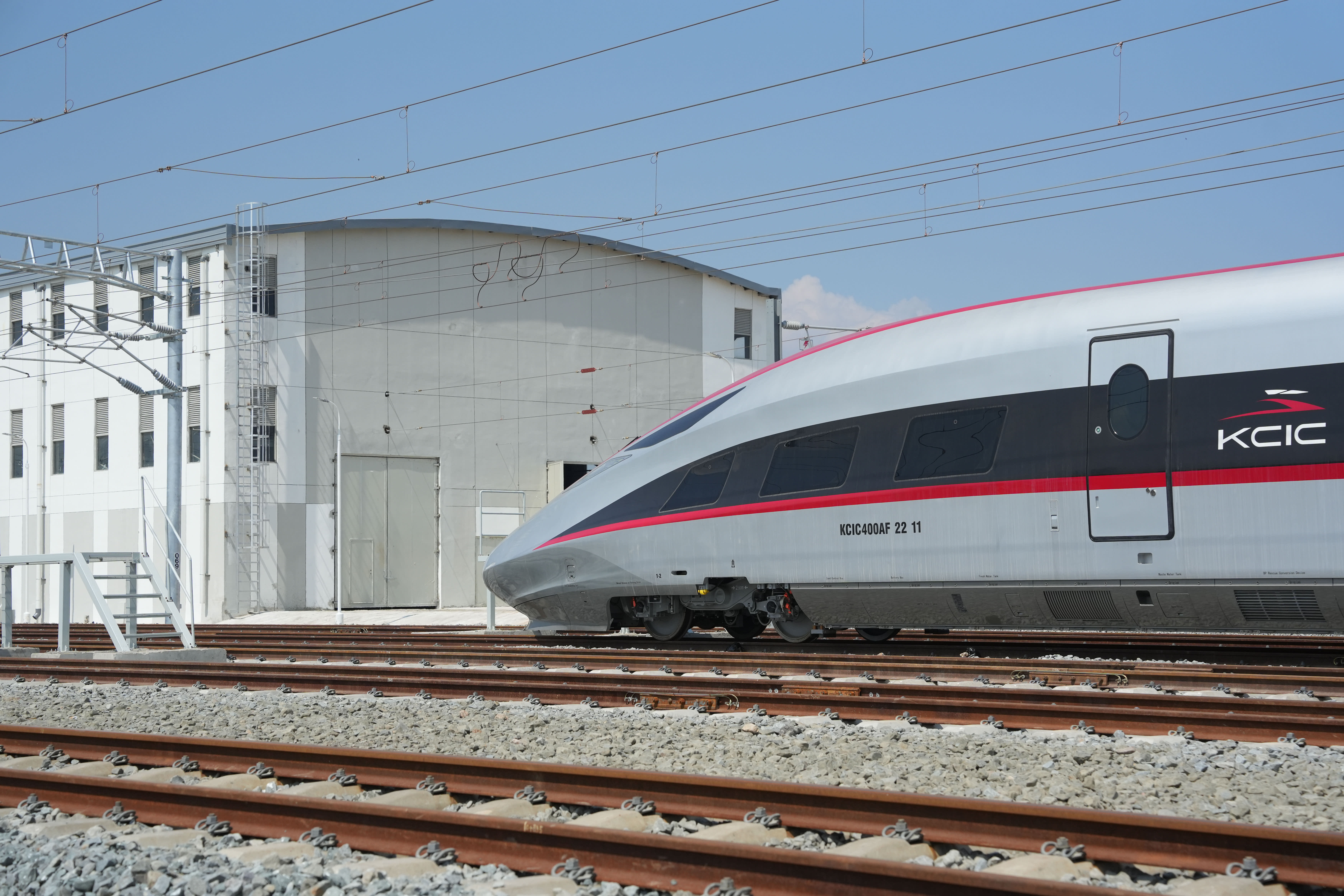
A $7.3 billion high-speed electric rail line between Indonesia’s two biggest cities is set to be launched in October, marking a milestone in the country’s quest to accelerate infrastructure development.
While it could improve overall economic and business productivity, those benefits may be overrun by Jakarta’s soaring debt burden as project costs continue to mount.
The 142-kilometre train linking Indonesia’s capital to Bandung is expected to move at 350 kilometers per hour, driven by electricity with no direct carbon emissions expected during operations. When completed, it will be the first of its kind in Southeast Asia.
Part of China’s Belt and Road Initiative, it’s funded by a consortium of Indonesian and Chinese state firms known as PT KCIC. It was initially expected to be completed by 2019 but has since been held back by various operational delays and a $1.2 billion budget overrun.
A trial launch is due in September and while safety checks are ongoing. Officials are also reportedly considering whether to extend the rail line to the Indonesian city of Surabaya.
The high-speed rail is a priority for Indonesian President Joko Widodo, better known at home as Jokowi.
Since coming to office, he has been looking to attract infrastructure investment deals, such as Jakarta’s brand-new sky train and Japan-financed subway.
“It will create more economies of scale and increase efficiency because the mobility of talented people between the two cities is higher,” explained Arief Anshory Yusuf, professor of economics at Bandung’s Padjadjaran University and visiting fellow at the Australian National University.
“Knowledge and ideas sharing will increase economic productivity, plus improve business proximities. Economic growth of these two regions will increase,” he said.
However, escalating costs of the project could push up Indonesia’s government debt and overshadow any short-term economic gains.
Initially, the train was to be financed by PT Kereta Cepat Indonesia China — a consortium of companies from China and Indonesia tasked with building the rail project. PT KCIC had received a $4.55 billion loan from the government-owned China Development Bank.
But with costs increasingly overrun, Jokowi agreed to use state funds to help finance the railway, which experts say will bloat public finances that are already inflated from pandemic-related costs.
In April, Indonesia sought an additional $560 million loan from China Development Bank, Reuters reported quoting a senior minister.
“Putting the state budget as collateral may result in losses that will eventually put the burden of debt to Indonesian citizens,” researchers from the Jakarta-based Center of Economic and Law Studies said in a May commentary on independent publication The Conversation.
“If Indonesia doesn’t want to end up with debt problems to those encountered elsewhere, it needs a strategy.”
CNBC reached out to Indonesia’s ministry of transport for comment on this article but has yet to receive a response.
The analysts were referring to Sri Lanka’s failed Hambantota Port development and Uganda’s Entebbe International Airport expansion project, both of which have sometimes been described as examples of Chinese debt-trap diplomacy.
China’s foreign ministry has long dismissed those claims.
At a press briefing earlier in March, Chinese foreign ministry spokesperson Mao Ning said the government has “never forced any party to borrow money or pressed any country to accept debt.” Beijing does not attach political conditions to loan agreements or seek political self-interest, Mao claimed.
“Indonesia should use its strategic position as ASEAN’s founding country and this year’s chair to renegotiate with China to reduce the risk of being entangled in debt defaults and suffer from deeper losses,” the researchers warned.
If the Jakarta-Bandung railway results in long-term costs and a ballooning of the state deficit, it could be seen as a bad investment, according to Yusuf.
In that scenario, money spent on the train would have been better spent on alternative investments like irrigation projects, he said. That kind of venture would reduce rural poverty in many regions — benefits that would surpass the train’s productivity boost, he added.
If the rail line were to cost 108.14 trillion Indonesian rupiah ($7.3 billion), that would mean each kilometer of the track requires an investment of around IDR 758 billion, stated a recent op-ed in local newspaper Kompas.
“This amount is clearly higher compared to the cost of building a toll road, which is only IDR 90-110 billion per kilometer,” the report said.
Observers say that if there aren’t enough passengers, it could actually offset environmental advantages.
While electric trains reduce energy consumption and pollution compared to cars and diesel trains, underutilized trains may be less cost-effective.
“Per passenger-kilometer travelled, a reduction between half to more than two-third of energy consumption is expected with a well-occupied train,” explained Putra Adhiguna, energy technologies research lead for Asia at the Institute for Energy Economics and Financial Analysis.
“Moving away from road transport to public transport is welcomed, but low occupancy will result in low energy efficiency while placing a burden to the railway finance, and by extension the public budget.”
Because Jakarta and Bandung are relatively close in distance, only about 150 kilometers apart, existing toll roads could make the fast-speed train less competitive than cars and other railway lines.
“With price premium and other competing transport modes, the risk of low occupancy is very real and needs to be addressed,” said Adhiguna.
Source: CNBC
